Ethiopia Flag Meaning
Three horizontal stripes of green, yellow, and red with a blue circle containing a yellow five-pointed star in the center, representing the original Pan-African colors, the diversity and unity of Ethiopia's peoples, and the country's ancient independence.
- Continent
- Africa
- Adopted
- 1996
- Ratio
- 1:2
- Colors
- green, yellow, red, blue
- Designer
- Unknown
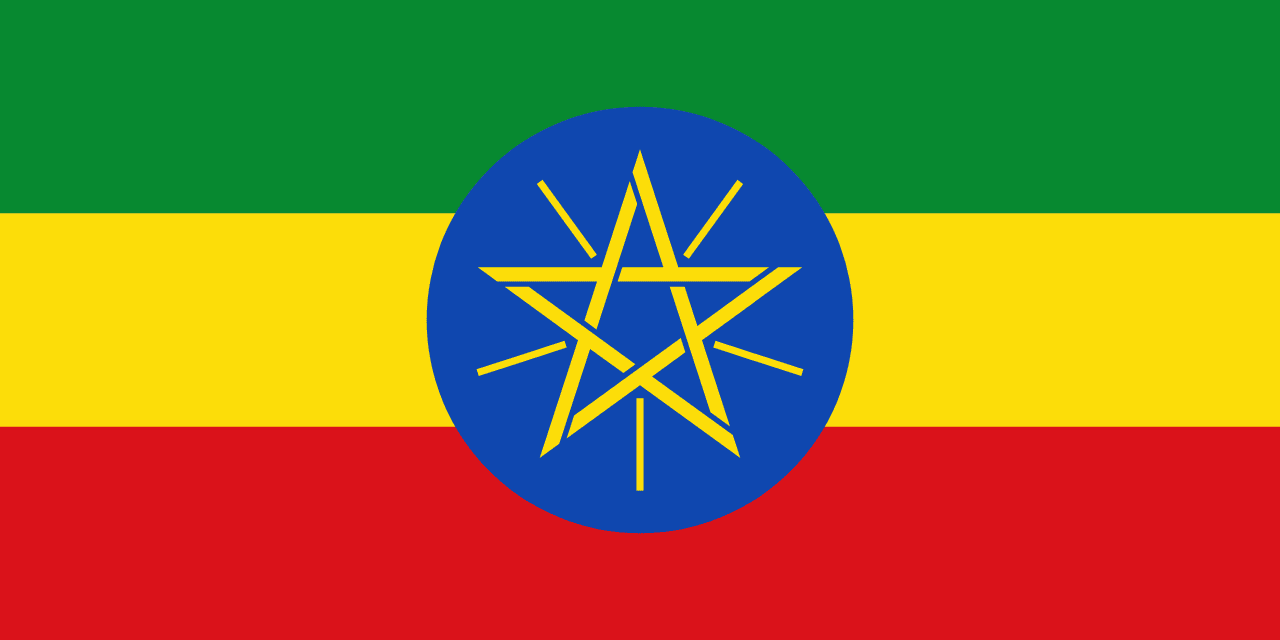
Symbolism
Green Stripe: Represents the fertility and richness of the Ethiopian land, symbolizing hope, labor, development, and the agricultural foundation that has sustained Ethiopian civilization for millennia in the Horn of Africa.
Yellow Stripe: Represents religious freedom, peace, and natural wealth, symbolizing the harmony among Ethiopia's diverse religious communities and the country's mineral resources and golden sunshine.
Red Stripe: Represents the blood shed in defense of the motherland and the sacrifice made for freedom, symbolizing the heroism of those who died protecting Ethiopia's independence throughout its long history.
Blue Circle: Represents peace and democracy, symbolizing the unity that binds together Ethiopia's many ethnic groups and the sky that covers all peoples of the nation equally.
Yellow Five-Pointed Star: Represents the unity and equality of all Ethiopian peoples regardless of race, creed, or sex, symbolizing the bright future and the federal system that respects the diversity of the Ethiopian federation.
History
- Ancient Times: The region was home to ancient civilizations including the Kingdom of Aksum, one of the great trading empires of the ancient world, with its own currency, alphabet, and monumental architecture.
- 4th Century CE: Ethiopia became one of the first nations to adopt Christianity as the state religion under King Ezana of Aksum, establishing the Ethiopian Orthodox Church that remains central to national identity.
- 1270-1974: The Solomonic dynasty claimed descent from King Solomon and the Queen of Sheba, using various royal banners and the Lion of Judah as symbols while maintaining independence from colonial powers.
- 1896: Ethiopia's victory over Italy at the Battle of Adwa preserved its independence, making it the only African nation (except Liberia) never to be fully colonized by European powers.
- 1930-1974: Emperor Haile Selassie's reign modernized Ethiopia and made him a Pan-African leader, with the green-yellow-red colors becoming symbols of African independence movements worldwide.
- 1974-1991: The Derg military government overthrew the monarchy and established a communist state, using variations of the tricolor while implementing socialist policies and fighting civil wars.
- 1991-1995: The Ethiopian People's Revolutionary Democratic Front (EPRDF) took power, establishing a federal system and transitional government that respected ethnic diversity and regional autonomy.
- February 6, 1996: The Federal Democratic Republic of Ethiopia adopted the current flag with the blue circle and star, representing the new federal constitution and the unity of diverse ethnic groups.
- 1996-Present: The flag has represented Ethiopia through economic growth, political reforms, regional conflicts, and efforts to build a stable multi-ethnic federation while maintaining its position as a regional power.
Trivia
- Ethiopia is considered the 'Cradle of Humanity' as it's where some of the oldest human fossils have been found, including 'Lucy' (Australopithecus afarensis) discovered in 1974.
- The flag represents the birthplace of coffee, with legends tracing the discovery of coffee's energizing effects to Ethiopian highland shepherds over 1,000 years ago.
- Ethiopia follows its own calendar with 13 months (12 months of 30 days plus one month of 5-6 days) and is about 7-8 years behind the Gregorian calendar.
- The flag flies over a country that was never fully colonized, successfully resisting European imperialism and serving as a symbol of African independence and dignity.
- Ethiopia is home to more UNESCO World Heritage Sites than any other African country, including ancient churches carved from solid rock in Lalibela.
- The flag represents a country with over 80 different ethnic groups and languages, making it one of the most diverse nations in Africa.
- Addis Ababa, the capital, is known as the 'political capital of Africa' as it hosts the African Union headquarters and numerous international organizations.
- Ethiopia's flag inspired many other African independence movements, with the green-yellow-red color combination becoming known as the Pan-African colors.
- The country is the source of the Blue Nile, which joins the White Nile in Sudan to form the main Nile River that flows through Egypt to the Mediterranean.
- Ethiopia has its own unique script called Ge'ez (Fidel), used for Amharic and other languages, making it one of the few African countries with its own writing system.
- The flag flies over a country where the majority practices Ethiopian Orthodox Christianity, which has unique traditions including fasting for over 200 days per year.
- Ethiopia was historically home to a significant Jewish community (Beta Israel or Falasha) who practiced ancient forms of Judaism for centuries before most emigrated to Israel.
- The Great Rift Valley runs through Ethiopia, creating unique geological features, lakes, and ecosystems that are home to endemic wildlife species.
- Ethiopia's long-distance runners dominate international competitions, particularly in marathon and distance events, representing African excellence in athletics.
- The flag represents a country that has maintained its own time system (counting from dawn) and unique cultural practices despite external pressures throughout history.
Related Countries
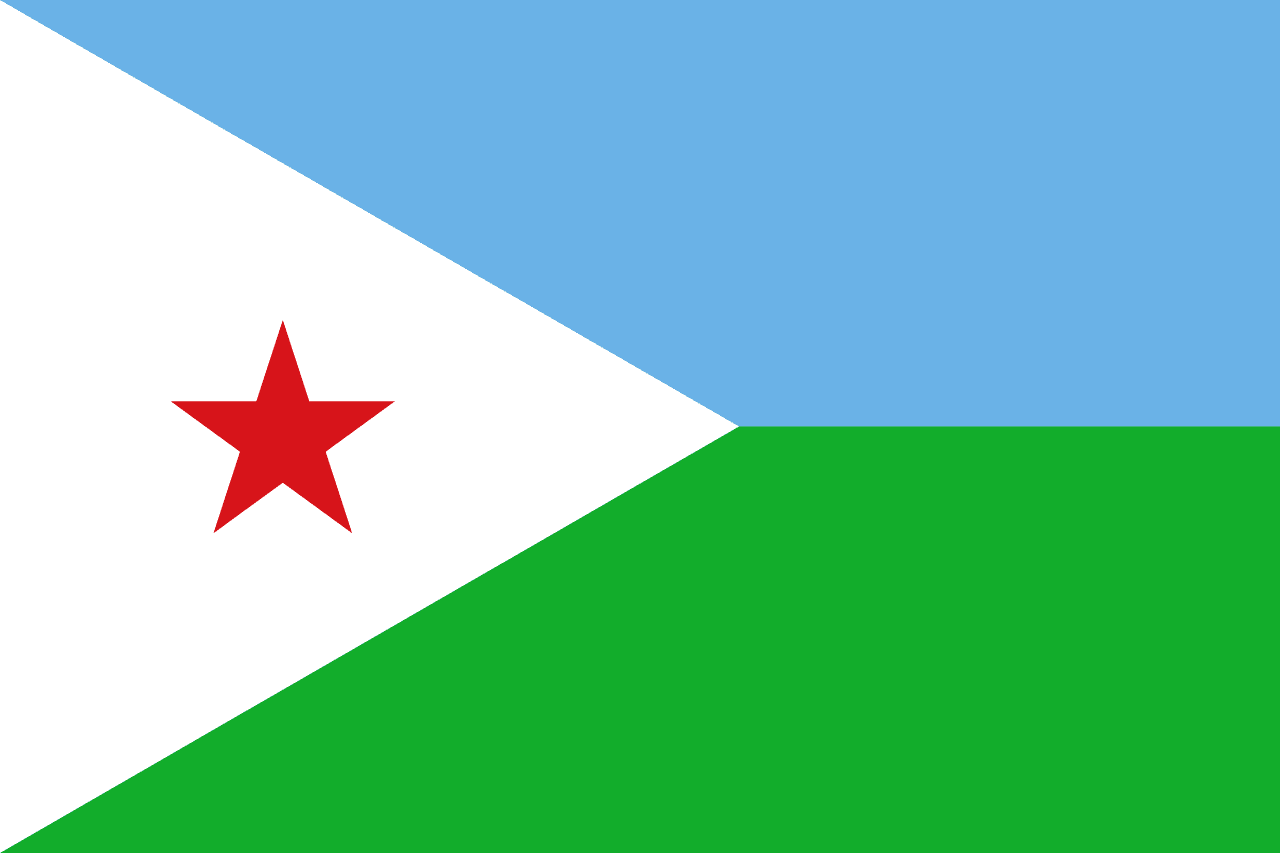
Djibouti
Africa
A light blue field with a white triangle at the hoist containing a red five-pointed star, and a green lower stripe, representing the sky and sea, the Issa people, peace, unity, and the Afar people of this strategic Horn of Africa nation.
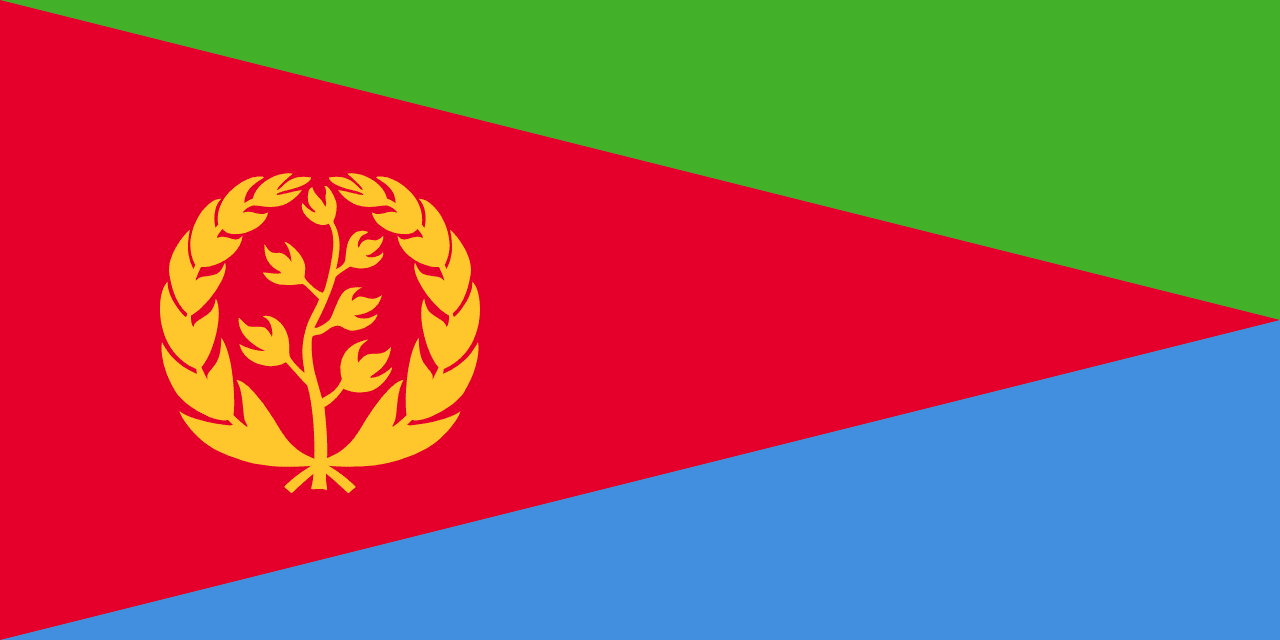
Eritrea
Africa
A red triangle at the hoist with a golden olive branch and wreath, adjacent to green and blue triangular sections, representing the struggle for independence, agricultural potential, maritime heritage, and hopes for peace.
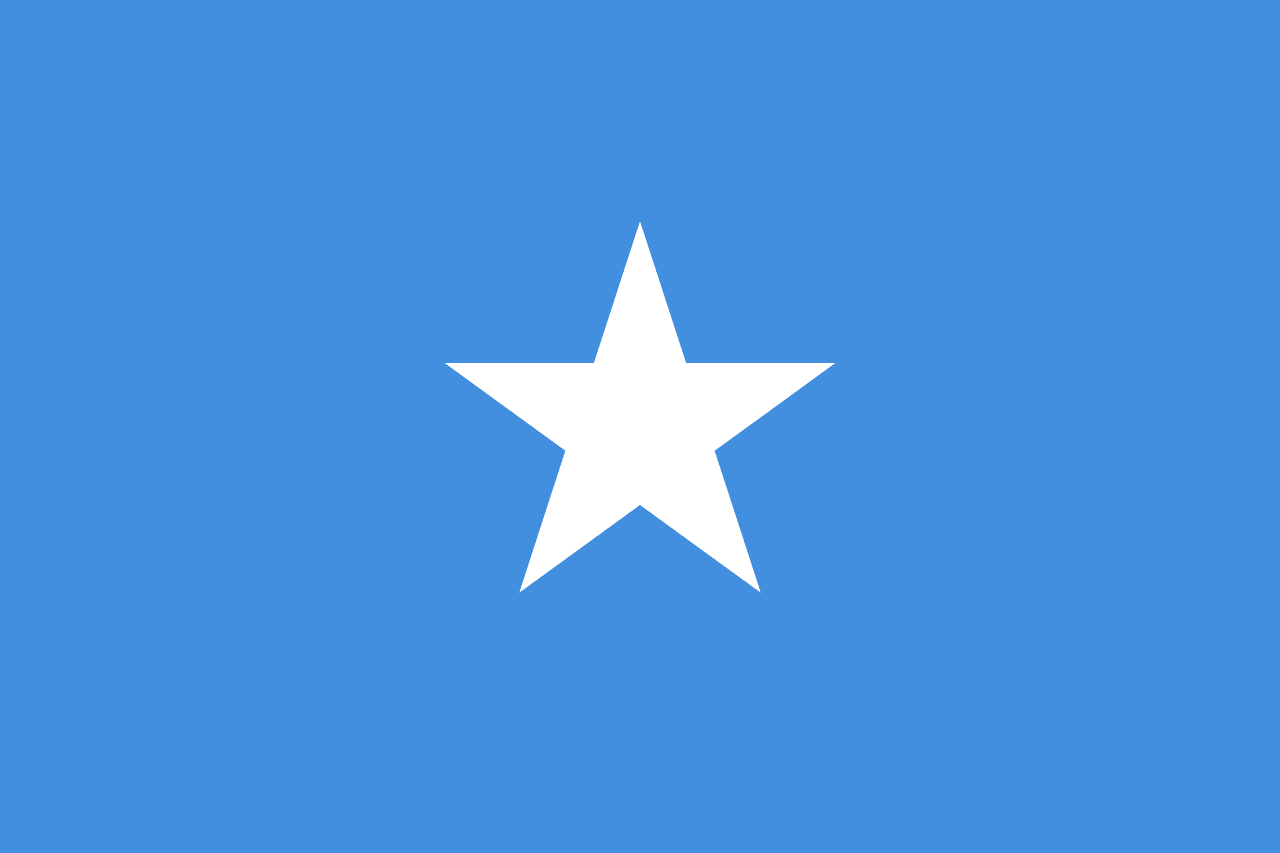
Somalia
Africa
A light blue field with a white five-pointed star in the center, representing the United Nations that helped Somalia achieve independence, the sky and Indian Ocean surrounding the Horn of Africa, and the five historical regions of Greater Somalia united under one symbol.
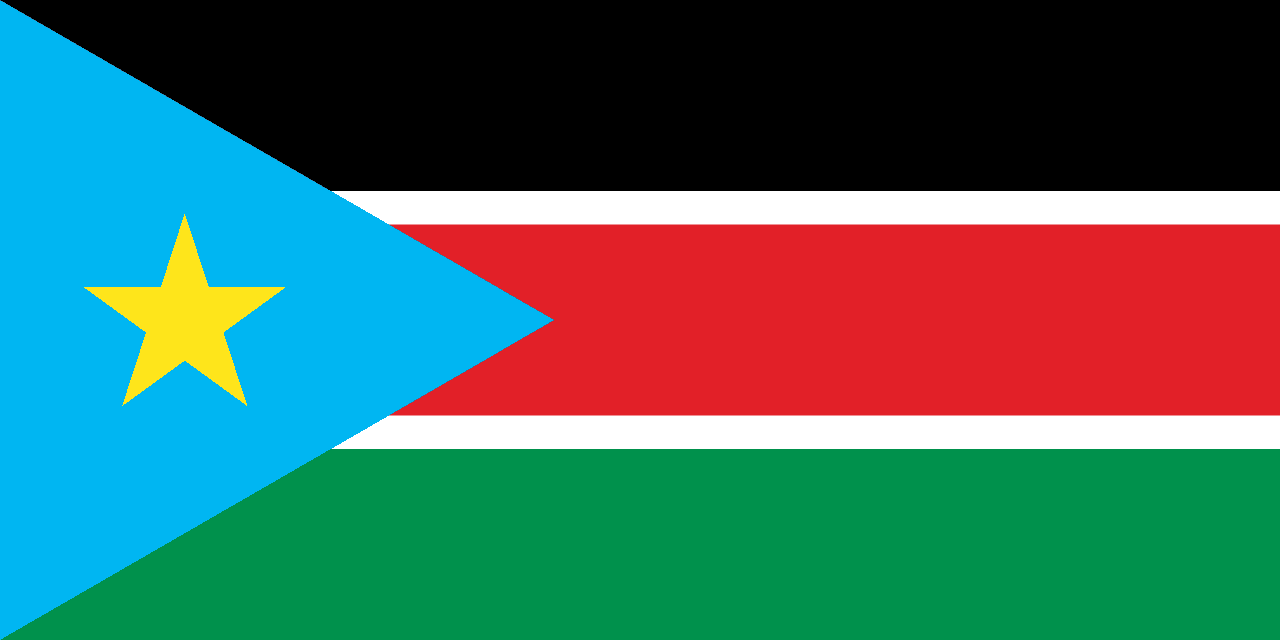
South Sudan
Africa
Three horizontal stripes of black, red, and white with a blue triangle at the hoist containing a yellow star, representing the African people, the blood shed for freedom, peace, the Nile River, and the unity of the states, designed for the world's newest country upon independence in 2011.
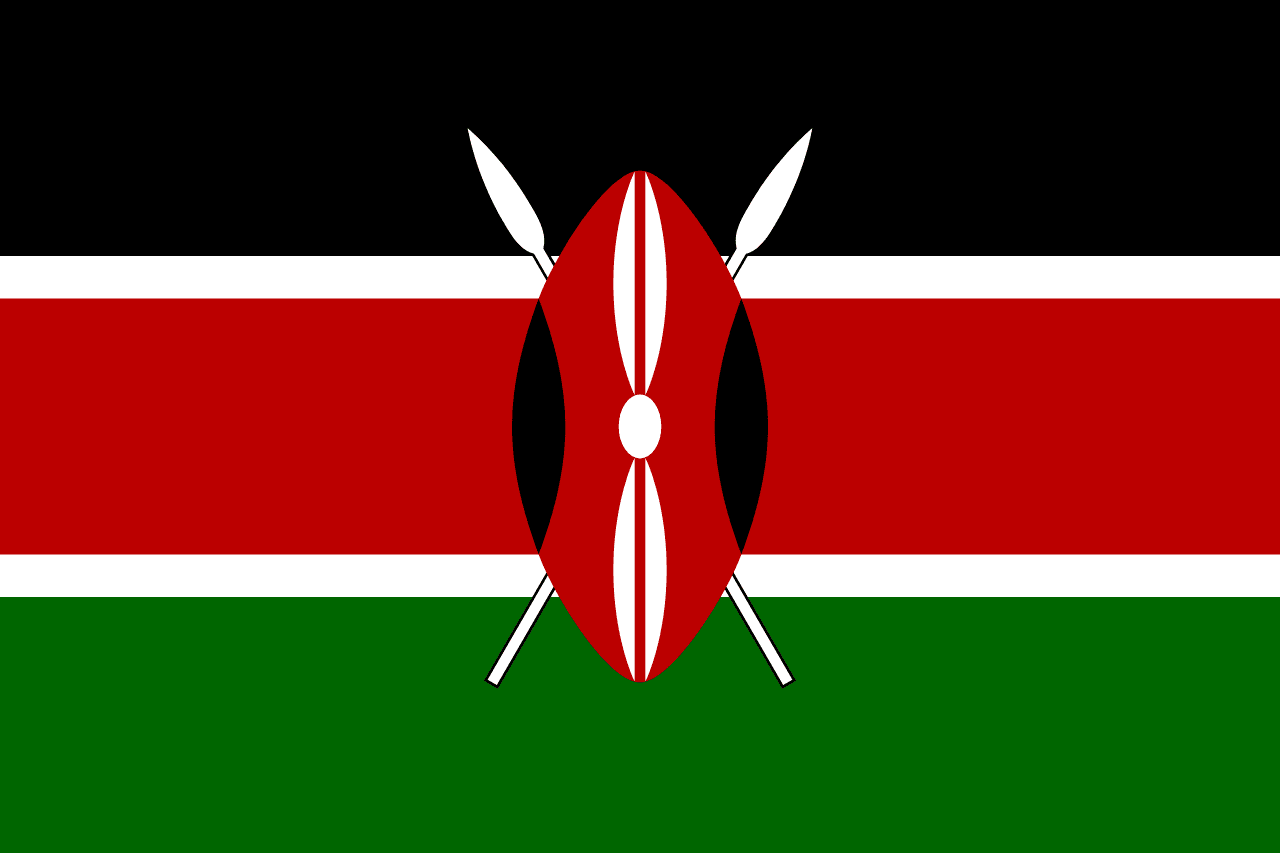
Kenya
Africa
Three horizontal stripes of black, red, and green separated by narrow white stripes, with a traditional Maasai shield and two crossed spears centered on the flag, representing Kenya's struggle for independence and the defense of freedom.
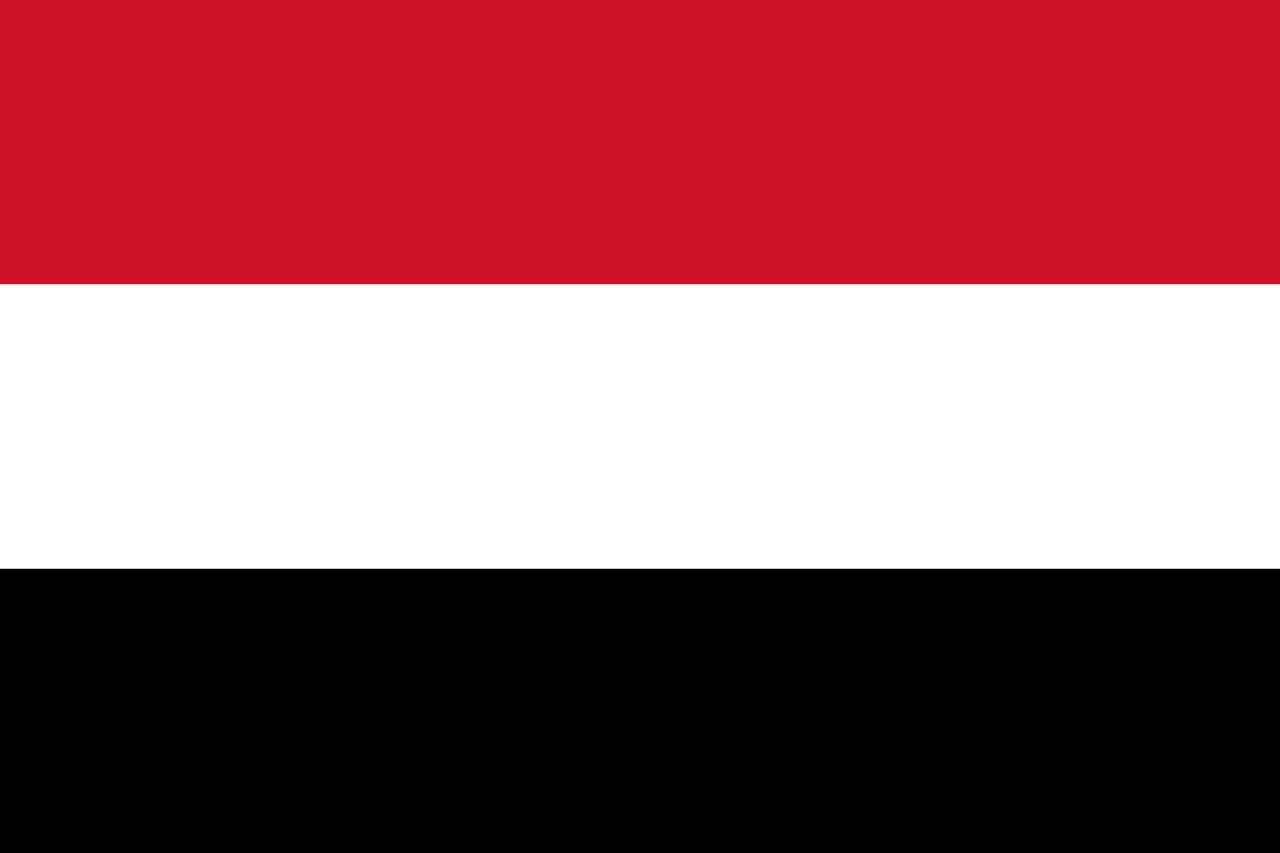
Yemen
Asia
Three horizontal stripes of red, white, and black representing the Pan-Arab colors that symbolize the bloodshed for freedom, bright future and peace, and the dark past of oppression, adopted when North and South Yemen unified into the Republic of Yemen.